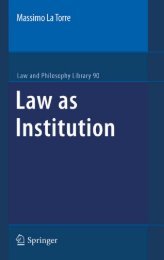THEORY OF CONSTRAINTS
THEORY OF CONSTRAINTS
THEORY OF CONSTRAINTS
You also want an ePaper? Increase the reach of your titles
YUMPU automatically turns print PDFs into web optimized ePapers that Google loves.
Kepler had in his possession all the voluminous and surprisinglyprecise measurements that Tycho Brahe and his group gatheredover several decades. By analyzing this data Kepler succeeded,after a mammoth mathematical effort of more than thirty years,to produce some correct correlations and some more mistakencorrelations. Newton, on the other hand, started by examiningone effect—why an apple falls down. He speculated the gravitationallaw as a plausible cause and derived from its existence atotally different effect—the orbits of the planets around themoon. Correlations do not trigger the effect-cause-effect stage. Atmost they shorten the time required to check the existence ofsome predicted effects.This process of speculating a cause for a given effect and thenpredicting another effect stemming from the same cause is usuallyreferred to as Effect-Cause-Effect. Many times the process doesnot end there. An effort is often made to try and predict moretypes of effects from the same assumed cause. The more types ofeffect predicted—and of course verified—the more "powerful" isthe theory. Theory in science—unlike in the common language—must be practical, otherwise it is not a theory but just an emptyscholastic speculation.We should strive toreveal thefundamental causes,so that a roottreatment can beapplied, rather thanjust treating theleaves—thesymptoms.Every verified, predicted effectthrows additional light onthe cause. Oftentimes this processresults in the cause itselfbeing regarded as an effect thustriggering the question of whatis its cause. In such a way, a logicaltree that explains manyvastly different effects can growfrom a single (or very few) basicassumptions. This techniqueis extremely helpful in trying tofind the root cause of a problematicsituation. We shouldstrive to reveal the fundamentalcauses, so that a root treatment can be applied, rather than justtreating the leaves—the symptoms. I myself usually elect to stopthe process of finding a cause for a cause, when I reach a causewhich is psychological and not physical in nature.33




